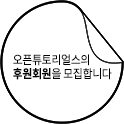수업소개
홈페이지를 구현해봅시다.
강의
요약
1. 아래의 코드를 server.py에 적용합니다.
from flask import Flask
import random
app = Flask(__name__)
topics = [
{'id': 1, 'title': 'html', 'body': 'html is ...'},
{'id': 2, 'title': 'css', 'body': 'css is ...'},
{'id': 3, 'title': 'javascruot', 'body': 'javascript is ...'}
]
@app.route('/')
def index():
liTags = ''
for topic in topics:
liTags = liTags + f'<li><a href="/read/{topic["id"]}/">{topic["title"]}</a></li>'
return f'''<!doctype html>
<html>
<body>
<h1><a href="/">WEB</a></h1>
<ol>
{liTags}
</ol>
<h2>Welcome</h2>
Hello, Web
</body>
</html>
'''
@app.route('/create/')
def create():
return 'Create'
@app.route('/read/<id>/')
def read(id):
print(id)
return 'Read '+id
app.run(debug=True)
변경사항 : https://github.com/egoing/flask-tutorial-src/commit/3d881715421d1ab5caf6ba0652a66677d7f5d170
2. 아래 코드는 복수의 데이터를 파이썬의 데이터로 전환하는 모습니다.
topics = [
{'id': 1, 'title': 'html', 'body': 'html is ...'},
{'id': 2, 'title': 'css', 'body': 'css is ...'},
{'id': 3, 'title': 'javascruot', 'body': 'javascript is ...'}
]
동급의 데이터(각각의 글들)은 리스트로 표현하고,
데이터의 속성(id, title, body)은 딕셔너리로 표현했습니다.
3. HTML 코드를 동적으로 생성하고 있는 모습입니다.
liTags = ''
for topic in topics:
liTags = liTags + f'<li><a href="/read/{topic["id"]}/">{topic["title"]}</a></li>'
return f'''<!doctype html>
<html>
<body>
<h1><a href="/">WEB</a></h1>
<ol>
{liTags}
</ol>
<h2>Welcome</h2>
Hello, Web
</body>
</html>


